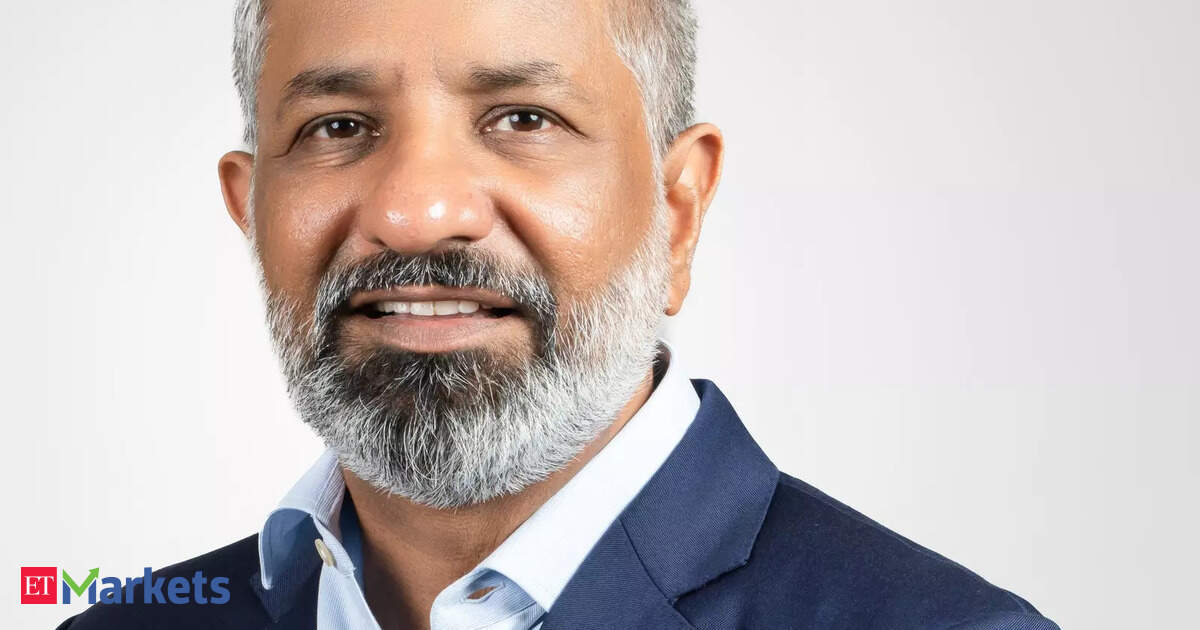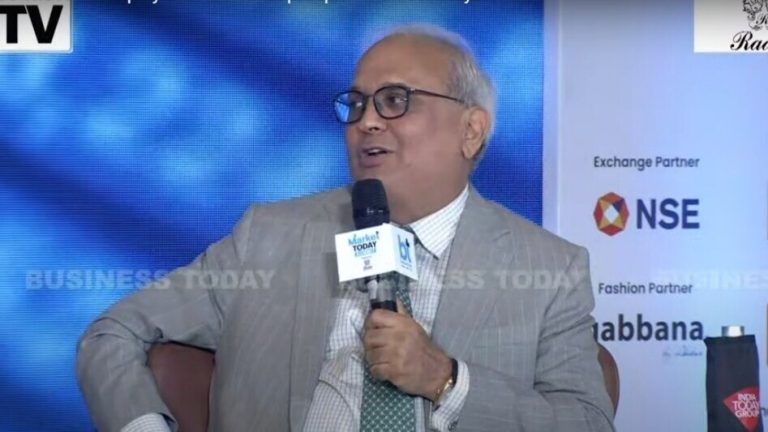From focusing on the Quality of businesses and management to ensuring the right Timing for long-term compounding, Rajkumar explains how the framework helps navigate a market increasingly driven by fundamentals.
He highlights why understanding a business, identifying earnings inflection points, and prioritizing superior risk-reward opportunities are key to generating sustainable returns, especially in today’s stock picker’s market. Edited Excerpts –
Q) Thanks for taking the time out. Nifty closed with marginal gains in June, but for the first six months of 2025 – it is up over 7%. How do you see markets for the rest of FY26? Any big events to watch out for?
A) Absolutely—while the headline numbers look stable, there’s a lot brewing beneath the surface, both globally and domestically.
On the global front, the biggest overhang remains the U.S. tariff situation. Although India has not been targeted directly, the absence of a formal trade resolution still leaves room for uncertainty.
The market is pricing in a potential positive outcome, but recent steep tariffs announced by President Trump on 14 countries—including Japan and South Korea—could create ripple effects across global supply chains. This adds to the broader geopolitical risk premium.
The U.S. Federal Reserve is another key variable. It paused rate cuts in December 2024 and is now waiting to see how inflation behaves—especially in response to tariffs—before resuming any easing cycle. Any clarity here could be a strong directional trigger.
Domestically, we are in the late stages of the monetary policy cycle. The RBI has already front-loaded much of its easing through rate cuts and a CRR reduction.
While one or two rate cuts might still be on the table, they’re likely to be spaced out. Importantly, liquidity remains abundant, which should continue to support credit growth and market sentiment.
The most critical catalyst going forward will be the earnings cycle. FY25 saw lacklustre earnings growth, which capped market momentum.
A meaningful rebound in Q1 and Q2 of FY26 will be key—strong earnings can justify current valuations and drive further inflows from both domestic and global investors.
Also worth watching are flows into Indian equities via SIPs and FPI activity—both remain resilient so far. If macro stability and earnings recovery come through, we believe the Nifty breaching its all-time high before the end of 2025 is not just possible, but probable.
Q) How are you managing the volatility in your portfolio? Any key learnings which you would like to share from 1H2025?
A) We approach portfolio management with a structured and disciplined process. Our review framework includes quarterly earnings, monthly business updates, annual reports, industry developments, and broader macro signals.
We also treat market prices as a useful feedback mechanism—they help us challenge our assumptions, but they don’t drive our decisions.
The first half of 2025 was undoubtedly testing. Volatility picked up after a very strong second half of 2024, and naturally, we asked ourselves whether any structural changes were warranted.
But after careful analysis, we concluded this was more of a healthy correction rather than a fundamental breakdown. So, we held our positions with conviction—and that discipline is paying off as markets retrace towards their earlier highs.
The key learning has been to stay anchored in process and avoid reacting to noise. In hindsight, not over-engineering the portfolio during turbulent phases has added more value than chasing tactical moves.
As we look ahead, we remain focused on long-term secular trends and deepening client engagement—those continue to be our north stars.
Q) One of the reports suggested that India Inc.’s profits have grown nearly 3x faster than GDP since FY20. What structural factors are driving this divergence?
A) Yes, that’s broadly accurate — corporate earnings have significantly outpaced GDP growth since FY20, and there are several structural factors at play.
First, the recovery from the COVID-induced low base in FY20 gave a natural boost to earnings. But more importantly, FY22 and FY23 saw strong topline growth, aided by high commodity prices and robust demand across sectors. Even adjusting for the base effect, revenue momentum has remained healthy.
Margins have also expanded meaningfully. Companies focused heavily on cost optimization and supply chain efficiencies during the pandemic, and those gains have continued.
Formalisation of the economy post-GST has improved compliance, reducing leakage and boosting operational efficiencies — especially for larger, organized players.
In the financial sector, improved asset quality and lower provisioning requirements have driven strong bottom-line growth, along with some one-off write-backs.
Corporate India has also become more disciplined with capex, leading to better capital allocation, strong free cash flow generation, and widespread deleveraging.
In short, a combination of operating leverage (higher margins on stable revenues), financial leverage (lower interest and provisioning costs), and structural tailwinds like GST, digital adoption, and improved governance standards have all played a role in this divergence.
Going forward, if this discipline continues and demand remains resilient, India Inc. could sustain a higher earnings growth trajectory than nominal GDP for some time.
Q) With the China+1 theme gaining traction, which Indian sectors are best placed to attract global capital and scale?
A) The China+1 strategy is no longer just a narrative — it’s translating into real capital flows, and India is emerging as a key beneficiary.
Several structural advantages work in our favour: a large, low-cost labour pool, a strong STEM talent base, and a proactive government that’s aligned on improving ease of doing business and building critical infrastructure.
Sectors well-positioned to benefit include:
● Pharmaceuticals and Specialty Chemicals: India has long been a trusted supplier of generics and intermediates. What’s changed is the global desire to derisk China exposure. For instance, the U.S. and EU have been actively looking to source key APIs (Active Pharmaceutical Ingredients) from India. Similarly, specialty chemicals used in agrochemicals and electronics are seeing capex announcements from global firms, especially in Gujarat and Maharashtra.
● Electronics Manufacturing: Driven by the Production Linked Incentive (PLI) scheme, India has seen companies like Foxconn, Pegatron, and Tata Electronics commit billions to building mobile phone and component facilities. A striking example is how Apple now assembles iPhones in India, which a few years ago would have been unthinkable at scale.
● Semiconductors and ATMP (Assembly, Testing, Marking, Packaging): While India is still early in chip fabrication, the backend ecosystem is gaining traction. Micron’s investment in Gujarat for an ATMP facility is a landmark development. The fact that a U.S. semiconductor major chose India for its first such investment speaks volumes.
● Auto Components: With EV adoption rising globally, India is becoming a hub for certain key parts, especially for two-wheelers and small cars. Several Japanese and German Tier-1 suppliers are expanding their Indian footprint to serve both local and global OEMs.
● Renewables and Green Manufacturing: India’s solar panel, battery, and green hydrogen sectors are receiving a strong policy push. Companies like Reliance and JSW have announced massive investments here, and foreign players are beginning to collaborate as well.
What’s working is not just the cost advantage — it’s the credibility India has gained in key global supply chains. A good anecdote: Apple’s India-made iPhones made up nearly 7% of global iPhone production in 2023, up from less than 1% just three years prior. That kind of scale-up tells us the shift is real, not just aspirational.
Q) How is fixed income as an asset class looking for long term investment. How much money one should allocate as an hedge to combat volatility?
A) Investing is more about behaviour than anything else. Fixed income plays a crucial role in any long-term portfolio—not necessarily for maximizing returns, but for bringing in balance, stability, and predictability.
While equities tend to outperform other asset classes over long periods, they come with cycles of volatility that can test investor behaviour.
There’s a wide spectrum within fixed income as well—ranging from ultra-safe instruments like short-duration government bonds to higher-yielding, credit-risk-bearing assets like corporate bonds or even distressed debt. Investors should allocate based on their time horizon, liquidity needs, and risk appetite.
As a thumb rule, any money you expect to need in the next 2–3 years should ideally be parked in lower-risk fixed income instruments. For longer-term allocations, a mix of duration and credit strategies can enhance overall portfolio resilience and reduce drawdowns during equity corrections.
Also, in a structurally declining interest rate environment or during periods of high policy uncertainty, fixed income can deliver decent risk-adjusted returns.
Ultimately, asset allocation is less about chasing returns and more about managing emotions. And fixed income is a strong enabler of that discipline.
Q) Which sectors are likely to remain in spotlight in 2H2025?
A) From our perspective, several structural themes continue to play out, and our portfolio positioning reflects that.
We remain overweight on consumer discretionary, healthcare, NBFCs and HFCs, as well as the broader travel and tourism space—each benefiting from cyclical tailwinds and steady domestic demand.
A key focus area for us is capex-linked plays, especially in power and industrials. What’s particularly noteworthy is that private capex is now beginning to outpace public spending for the first time in over a decade.
This shift has meaningful implications for capital goods, construction, and certain segments of manufacturing.
We’re also selectively positioned in IT. While the sector as a whole remains under pressure, we are avoiding broad exposure and instead focusing on companies with resilient margins, robust order books, and strong digital transformation pipelines.
Overall, we continue to back businesses aligned with domestic growth engines and those demonstrating pricing power, balance sheet strength, and earnings visibility.
Q) Can we say that we are in a “stock picker’s market” ahead. If yes, what are the key traits investors should look for in FY26 picks?
A) Absolutely—we believe the broad-based rally is behind us, and we are firmly in a stock picker’s market now. The easy gains from riding sectoral or index-wide moves are giving way to a more nuanced phase where individual company fundamentals will drive returns.
At Quest, stock selection has always been core to our philosophy. We follow what we call the QUEST Way—a disciplined framework that guides our decision-making:
● Q stands for Quality of business and management. We seek companies with strong governance and durable competitive advantages.
● U is for Understanding—if you can’t understand a business, you shouldn’t own it. Simplicity often outperforms complexity.
● E is about Earnings potential—especially the ability to identify inflection points where earnings growth may accelerate.
● S represents Superior risk-reward—we look for asymmetry, where downside is limited but upside is meaningful.
● T reminds us of Timing—not in the sense of market timing, but the discipline of spending enough time in the market to allow compounding to work.
While these traits are timeless, sector context matters too. Given that most businesses are cyclical, we often apply a sectoral filter based on our macro and industry views. Once a sector is identified as attractive, the focus shifts to bottom-up stock picking using the QUEST framework.
In FY26, success will hinge less on riding market beta and more on precision—identifying the right businesses at the right stage of their journey.
Q) Gold has also seen a tremendous run in 2025 – how do you see the yellow metal shining in 2H2025? Time to book profits or add on dips?
A) Gold has been in a strong uptrend over the past few years, and 2025 has been no exception—with year-to-date returns of around 38%. This rally has been underpinned by a confluence of structural drivers: persistent geopolitical tensions, gold’s role as an inflation hedge, rising concerns around U.S. fiscal discipline, and a global shift towards de-dollarization.
A notable trend has been the surge in central bank demand—while average annual purchases a decade ago hovered around 400–500 tonnes, they’ve consistently crossed 1,000 tonnes in each of the past three years.
Given this backdrop, some tactical profit booking may be justified after the sharp run-up. However, from a strategic allocation standpoint, gold remains a valuable diversifier in portfolios.
The long-term case remains intact, especially as global macro uncertainties continue to linger. Adding on dips could be a prudent approach rather than exiting altogether.
Q) How should one play the small & midcap theme? Has the profitability improved compared to large caps – what does the data suggest?
A) In FY25, midcaps delivered robust earnings growth of around 15%, clearly outpacing large caps, which saw more muted growth of 5–6%. On the other hand, small caps underperformed meaningfully, with earnings declining by over 15%, reflecting the inherent volatility in that segment.
Looking ahead to FY26, large cap earnings are expected to improve gradually, aided by base effects and cyclical recovery in a few key sectors.
Midcaps, while still enjoying stronger earnings momentum, are now trading at a valuation premium to both large and small caps — suggesting that returns may be more in line with earnings growth rather than driven by further re-rating.
Small caps, despite their recent earnings dip, are projected to grow earnings by 15%+ in FY26, but the dispersion is going to be high. That calls for a more selective, bottom-up approach, focusing on balance sheet strength, management quality, and scalability.
The midcap rally has been largely earnings-led, not just liquidity-driven — and that’s a good sign. But with valuations elevated, investors need to be disciplined.
In small caps, it’s less about the index and more about identifying the next multibaggers over the mid-term horizon — which requires patience, research depth, and position sizing.
Q) Any sector which is running out of steam and investors should carefully pare their positions?
A) That’s a tough one to reply. Rather than taking a purely sector-specific view, we prefer to look at individual stocks within each sector. In our view, the more relevant question for investors is: Has too much of the future earnings potential already been priced in?
If valuations have run significantly ahead of fundamentals it may be prudent to pare positions. This is especially true when the current stock price implies a level of growth and profitability that may be hard to sustain given macro or competitive realities.
Ultimately, we believe stock selection should be driven by bottom-up conviction. Even in sectors facing near-term headwinds, there can be standout businesses with durable moats and pricing power. But where expectations have outrun earnings visibility, it’s wise to be cautious.
(Disclaimer: Recommendations, suggestions, views, and opinions given by experts are their own. These do not represent the views of the Economic Times)






